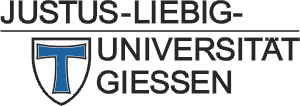Organoids derived from mouse and human stem cells have recently emerged as a powerful tool to study organ development and disease. We here established a three-dimensional (3D) murine bronchioalveolar lung organoid (BALO) model that allows clonal expansion and self-organization of FACS-sorted bronchioalveolar stem cells (BASCs) upon co-culture with lung-resident mesenchymal cells. BALOs yield a highly branched 3D structure within 21 days of culture, mimicking the cellular composition of the bronchioalveolar compartment as defined by single-cell RNA sequencing and fluorescence as well as electron microscopic phenotyping. Additionally, BALOs support engraftment and maintenance of the cellular phenotype of injected tissue-resident macrophages. We also demonstrate that BALOs recapitulate lung developmental defects after knockdown of a critical regulatory gene, and permit modeling of viral infection. We conclude that the BALO model enables reconstruction of the epithelial-mesenchymal-myeloid unit of the distal lung, thereby opening numerous new avenues to study lung development, infection, and regenerative processes in vitro.
Vazquez-Armendariz AI, Heiner M, El Agha E, Salwig I, Hoek A, Hessler MC, Shalashova I, Shrestha A, Carraro G, Mengel JP, Günther A, Morty RE, Vadász I, Schwemmle M, Kummer W, Hain T, Goesmann A, Bellusci S, Seeger W, Braun T, Herold S. Multilineage murine stem cells generate complex organoids to model distal lung development and disease. EMBO J. 2020 Nov 2;39(21):e103476. doi: 10.15252/embj.2019103476. Epub 2020 Sep 28. PMID: 32985719; PMCID: PMC7604576.


